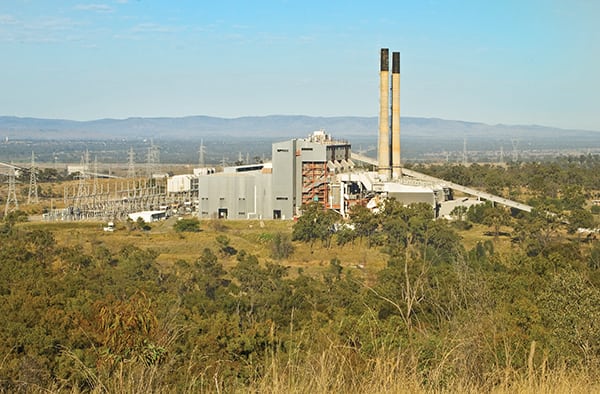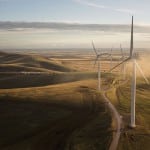Australia’s freshly elected prime minister, Tony Abbott, introduced a bill in November to scrap the nation’s controversial carbon pricing plan, which is slated to transition to an emissions trading scheme (ETS) in July 2014. But the government also declared it won’t extend the carbon tax beyond June 30, even if the Senate does not pass the repeal legislation by then—prompting alarm among generators and other stakeholders, who say the possibility of a retrospective repeal, even for a short period, will create risk for all participants and complicate the repeal process.
Abbott was elected in September partly on an election pledge to repeal the previous Labor government’s pricing plan, which sought to reduce greenhouse gas (GHG) emissions in coal-rich Australia by 5% below 2000 levels by 2020 and 80% by 2050 (Figure 2). The carbon-pricing scheme became effective in July 2012 as part of a broad energy reform package called the “Clean Energy Plan.” It currently taxes 370 major carbon emitters the world’s highest carbon price of A$24.15 per metric ton of emitted carbon dioxide and is set to switch to an ETS this July, moving from a fixed carbon price to a floating price of about A$6.
But Abbott has instead called for a so-called “direct action plan,” which includes an emission reduction fund and a market-based incentive for businesses to reduce GHG emissions. Observers in November noted that the bill is expected to easily pass the lower house, where the Liberal-National Coalition has a clear majority, but could face a standoff in the Senate, which is dominantly held by the Labor, Greens, independents, and several smaller parties. Abbott has promised to call a double dissolution of parliament if the Senate blocks the bill, which would mean elections to both the lower and upper houses.
If, however, the repeal bill has not been passed by July 1, 2014, the fate of the legislation will be handed to a new Senate that will meet on that date. But for the country’s power and gas transmission industries, that could mean confusion and uncertainty. “This stated intention to backdate repeal to 30 June 2014 does not mean that businesses can ignore the carbon tax while it remains law,” a number of industry groups said in a joint statement on Nov. 4. “The possibility of retrospective repeal, even for a short period, will create risk for all participants in the market and complicate the repeal process. If repeal cannot be secured well in advance of 30 June 2014, the industry is eager to work with the Government to find ways to address the challenges this will create.”
The groups are opposed to the carbon price, which they said already posed several uncertainties. It has increased the costs of fossil-fueled generators and therefore increased wholesale prices as affected generators sought to recover their increased costs. They noted, however, “it is impossible to precisely quantify the extent to which the carbon price has increased wholesale energy prices, as they vary based on the changing mix of generation output.” Further complicating this scenario is the “inability to attribute” a specific value to the carbon price at the time of trade. “Where a forward contract is all-inclusive, as is the case for exchange-traded products, each participant makes their own assessment of the value of the fully-inclusive price, including the impact of the carbon tax,” the groups said.
According to Matthew Warren, CEO of the Energy Supply Association of Australia, a more efficient means of reducing GHG emissions than putting a price on carbon has been to increase the renewable energy target (RET) to 20% by 2020, which he noted has already “forced in” 1.8 GW of large-scale renewable generation into the electricity market. “But there’s a problem,” he said. The RET was passed in 2009 when it was assumed demand for energy would soar. “With demand falling, the RET target is now approaching 30%. This means we will have to build even more renewable power stations trying to sell electricity into an already over-supplied electricity market. The higher cost of gas means in many instances more efficient, more modern and lower emissions gas generators are being stranded and older, cheaper coal generators remain online,” he observed.
“The kicker is that with no carbon price, the oversupply means that the wholesale price is likely to drop so low that even the value of Renewable Energy Certificates won’t be enough to pay for more new renewables,” he said. “You could try and fix this with a carbon price, but now with higher gas prices it would need to be $70 or more per tonne of carbon. Australia’s current fixed carbon price is $24.15 a tonne. If we link to the European scheme in 2015, it will fall to less than $10.”
Around the world, meanwhile, Australia’s proposed retreat on its climate plan has been received with mixed reactions. Canada, which withdrew from the Kyoto Protocol in 2011 and has failed to meet its own international GHG emissions targets, issued a formal statement in mid-November applauding Australia’s move to repeal the carbon tax. The decision will be “noticed around the world and sends an important message,” said Paul Calandra, parliamentary secretary to Canada’s prime minister, Stephen Harper. Canada in 2009 agreed to align its climate plan with the U.S. target to slash GHG emissions 17% from 2005 levels by 2020.
And in November, Japan’s Minister of Environment announced that country was changing its own carbon emission reduction target from 25% below 1990 levels by 2020 to a 3.1% increase from 1990 levels, or a 3.8% reduction from 2005 levels. Japan’s shifting stance was prompted by the country’s shutdown of all 50 nuclear power plants, which has forced the resource-poor country to rely on vast imports of coal and liquefied natural gas. The country’s power sector carbon dioxide intensity soared to levels in 2012 that were 39% greater than when the country’s nuclear plants were operational.
—Sonal Patel, associate editor (@POWERmagazine, @sonalcpatel)










